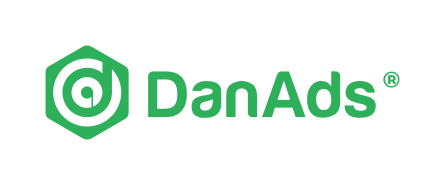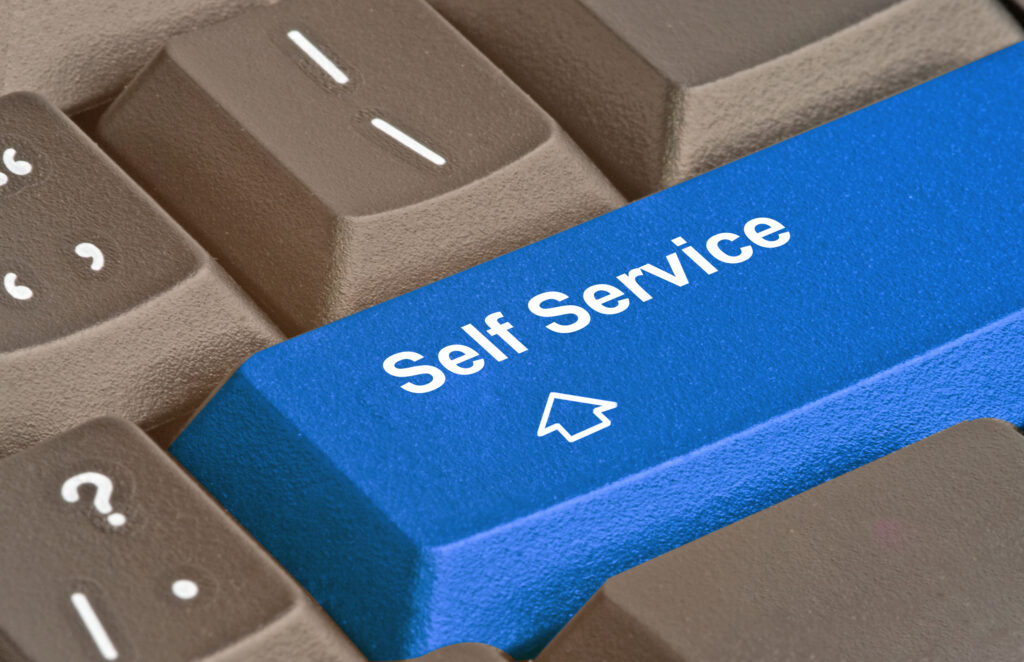In a rush? ⏳ Here’s our super-simple, 30-second explanation of self-serve:
Self-serve advertising is a way for advertisers to purchase advertising space directly from a publisher using an automated platform. This method allows publishers to:
- Save costs by using a low-cost technical platform instead of a manual sales team
- Make the advertising process more efficient and scalable
Self-serve advertising can streamline tasks such as:
- Ad distribution
- Payment and invoicing
- Performance tracking
Advertisers also benefit from being able to:
- Easily target specific audiences
- Access first-party data
While self-serve advertising may be a new concept to some, it is becoming increasingly popular as it allows for a more convenient and cost-effective way for both publishers and advertisers to reach their goals.
Self-service advertising – what does it really mean?
Self -service is an increasingly big part of our life as consumers and in business. Being able to do things without the involvement of another human being has allowed all of us to be in control of everything, from what we buy online (Amazon) to how we identify potential new jobs or employees (LinkedIn). Almost every online platform now provides users with self-service access. We even do our tax returns ourselves now.
In 2020, customers will manage 85% of their relationship with an enterprise without interacting with a human. Gartner Customer 360 Summit, 2019
86% of respondents said they prefer using self-service tools, rather than talking to a sales representative. McKinsey Study 2019
But sometimes phrases or words get overused or become buzzwords and get applied to almost everything. ‘Self-Service Advertising’ is definitely hot at the moment, so we thought we should take the time to explain the concept, taking it back to basics.
To start with, we need to understand that there are two players involved in a self-service advertising transaction – the platform owner or publisher who has advertising that they are selling on the self-service platform, and the advertiser who is buying it using the self-service platform.
Self-Service from the Publisher’s Perspective
As publishers have embraced digital throughout their business to save money and improve the efficiency of their service, they have also started to apply this logic to their advertising infrastructure.
“Let’s get the cost down…”
Traditionally, to sell advertising, publishers will build an advertising infrastructure that revolves around a salesperson who has the responsibility to sell to the advertiser by phone or face-to-face. A salesperson has a minimum cost in salary and office overhead and scaling up using this manual sales model is a multiple of both the number of sales people and the infrastructure support required to process the advertising they sell.
That’s where automated self-service comes in. In general, self-service uses a low cost technical automated platform to replace the manual tasks in the ad booking process. This is particularly important where the average cost of a sales person + operations support etc, exceeds the revenue from the advertising. For example, some of the early self-service platforms were created to sell low yield, high volume classified advertising. The rationale behind these classified self-service platforms is the same rationale behind all of self-service – that automation can provide a more efficient, lower cost and scalable option than traditional sales departments.
“Let’s make Ad Ops more efficient…”
Over the last few years, as they have seen their ad revenue fall, the pressure to reduce overhead on publishers has been the biggest driver of self-service advertising. But so has the need to use digital or automated technology to upgrade the advertising process to be more integrated internally, faster and more efficient:
Ad Distribution
Both online and print advertising utilise a digital server to distribute the actual advert so that it appears in the right place at the right time. Self-service platforms can be built to integrate with a publisher’s ad server to create a seamless flow from booking to Ad distribution, requiring no human intervention.
Payment and Invoicing
No need for an accounts department to raise an invoice or to manually check bank accounts for payments not received. Self-service works on pre-payment via a ‘shopping cart’ e-commerce model. Or if required, can issue invoices and flag late payers, sending payment reminders and notifications to the Accounts team.
Reporting & Analytics
Not all but certainly the better self-service advertising platform providers deliver a custom built reporting and analytics feature which allows both publishers and the advertisers to instantly see up to date evaluations and historical comparisons of their advertising data with online graphs and tables that can be exported or integrated into an existing reporting software.
Self-service can be a complete integrated digital one-stop-shop advertising solution for publishers that will transform their advertising operations.
“Let’s make sales more efficient…”
Traditionally, advertising Sales teams have to work very closely with the Ad Ops team to make sure a booked advert is pushed through the system smoothly. This can be very labour intensive and a multi phased, multi person process.
With self-service, both these functions are automated to work more efficiently using a fraction of the resources. Having a self-service option leaves a sales person free to focus on providing larger clients with the full white-glove service, whilst small-to medium clients are managed via the self-service platform.
Once an SME client is registered on the self-service platform, the client is in control of their own campaigns. Sales have minimum direct involvement, but are able to use the self-service platform management tools and dashboard to extract summary data, check ongoing campaign performance and approve creatives. Reducing the time per booking by over 80% in some cases* ..which is a whole lot more efficient and lowering costs.
“Let’s get the revenue up…”
Saving overhead is not the only way self-service will improve a publisher’s bottom line. Self-service has the potential to scale large numbers of new advertisers. SME advertisers that traditionally have had low budgets (being too small to warrant the attention from resource strapped publishers) can now access the same platforms as larger advertisers and receive the same service. Self-service platforms give publishers the tools to offer all their advertisers highly sophisticated planning, buying and tracking services for their ad campaigns in a user-friendly environment that they can manage themselves.
With self-service advertising, the publisher changes the focus away from manually ‘selling’ the ad space to existing advertisers and processing the bookings, to pro actively marketing their automated self-service platform to attract new advertisers.
Self-Service from the Advertiser’s Perspective
Advertisers have become educated in using self-serve advertising tools through digital advertising platforms such as Google Ads, Amazon and Facebook. It has become the norm in digital marketing and increasingly the norm in print advertising.
“Let me have control when I want…”
For an advertiser, self-service advertising allows them to control all aspects of their advertising campaign 24/7 without the need to wait to talk to a sales person.
After creating an account, an advertiser will follow a simple and intuitive step-by-step process which guides them through each stage in building the ad campaign they want. For example:
- Set budget.
- Select Ad Format
- Choose Target Audience
- Focus on particular regions or cities.
- Decide when the ads will appear.
- Upload an existing ad or create a new one.
- Add to Cart and purchase
At every stage the advertiser is able to view all the available options in their own time and play with the variables. They can build different campaigns before selecting their final version. This freedom is why self-service advertising is so popular. And with most good quality self- service platforms there is a real person at the end of an online chat or phone should there be any problems or questions.
“Let me know what’s happening…”
Advertisers are spending their own money and they want to know how it is being spent and the results. In the same way that self-service platforms provide the publisher with reporting and analytics, they offer the advertiser their own easy to use tables, charts and graphs, to keep the advertiser up to date with how their campaigns are running at all times.
No publisher could afford for their sales team to offer all SME advertisers the time to run through every available advertising campaign option or keep them up-to-date with a regular campaign summary and performance review. Automated self-service offers every size of advertiser the same high quality service.
And finally …..
Not every self-service advertising platform is the same, but they all do the job of connecting the publisher to the advertiser in a web interface that enables the advertising transaction to take place 24/7 with each party being in full control of their data at every stage.
The growing popularity of self-service advertising is simply down to the application of automated technology solving the problems faced by today’s publishers and the new demands from today’s advertisers.
- 80% based on an average of previous clients’ experience.






